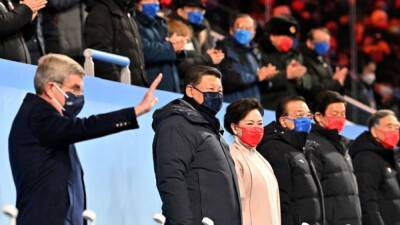China showcases low-carbon tech for 'green' Games
BEIJING : From natural carbon dioxide refrigeration at ice rinks to 100per cent renewables-powered venues, China is striving to run a "green" Olympics to showcase its leadership in climate-friendly tech and counter concerns about the lack of natural snow at its venues.
President Xi Jinping has pledged China, the world's biggest polluter, will reduce its total carbon emissions from 2030 and be a global leader in fighting climate change.
"(The Chinese) want sustainability to be the heart of how they prepare and host the Games," Marie Sallois, Director of Corporate and Sustainable Development at the International Olympics Committee, told Reuters.
The Beijing Winter Olympics Committee said in a pre-Games report in January that about 158,300 tonnes of emissions have been saved via deployment of low-carbon energy and venues.
Total greenhouses gases emissions could reach 1.028 million tonnes of carbon dioxide equivalent throughout the preparation and post-Beijing Games in 2016-2022, about a third less than the 1.6 million tonnes emitted for South Korea's Pyeongchang Games in 2018.
Most of that reduction comes from the absence of overseas spectators at the Beijing Games due to China's zero-COVID protocols. The lower number of international flights will mean 512,000 tonnes of CO2 emissions less than earlier projections, the committee said.
WASTE COOLED RINKS
China, for the first time at an Olympics, is using CO2 collected from industrial waste gases to cool ice rinks in its four ice sports venues, replacing traditional hydrofluorocarbons that can damage the ozone layer.
"With the CO2 refrigeration process, we can save 20-30per cent on electricity compared to traditional ice making methods," Wu Xiaonan, an official at the National Speed







